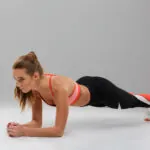When’s the last time you thought about your rotator cuff? If you’re like most people, the answer is probably never… Until something starts hurting. The truth is, your rotator cuff is working hard every time you move your shoulder, whether you’re pressing a barbell overhead or just grabbing a jar off the top shelf.
Most gym routines completely ignore rotator cuff training. That’s a mistake. Weak rotator cuffs are a major reason behind shoulder pain, plateaus in strength, and even long-term injuries that can wreck your training.
The good news? A simple resistance band and a few smart exercises can seriously upgrade your shoulder health. Let’s get into it.
Why the Rotator Cuff Deserves Your Attention
Your rotator cuff isn’t one muscle, it’s a team of four small muscles (supraspinatus, infraspinatus, teres minor, and subscapularis) that stabilize your shoulder joint.
The problem is, because they’re small, they get overshadowed by bigger, flashier muscles like the delts and traps. Left unchecked, a weak rotator cuff turns into shoulder instability, sloppy lifts, and eventually, pain. It’s the classic “everything feels fine… until it doesn’t” story.
On the flip side, training your rotator cuff pays off big. Strong cuffs mean stronger pressing, cleaner pull-ups, healthier posture, and fewer annoying tweaks that force you to back off your workouts. If you care about performance (or just want to keep training into your 40s, 50s, and beyond), this stuff is non-negotiable.
Essential Rotator Cuff Resistance Band Exercises
If you actually want a shoulder that can perform and survive heavy training, you need these five moves in your rotation. Keep it clean, light, and controlled.
1. External Rotations (Elbow Tucked)
The classic. Anchor the band to something stable at elbow height. Keep your elbow tight to your side (like you’re holding a newspaper there) and rotate your forearm out. This strengthens the infraspinatus and teres minor.
Tip: If your shoulder blade starts winging out or your elbow drifts, you’re doing it wrong.
If you make these mistakes often, try out these resistance bands exercises for shoulder blades for better posture.
2. Internal Rotations
Flip the external rotation. Same setup, but now you’re pulling in across your body. This hits the subscapularis. Balance matters; don’t just hammer external work and expect to be bulletproof.
Tip: Control the return, don’t let the band snap you back.
3. Face Pulls with External Rotation
Hook the band higher, around forehead height. Pull the band toward your face, but add an external rotation at the end, basically making a “W” with your arms. This lights up your rear delts and your rotator cuff.
Tip: If you’re just yanking the band straight to your nose with zero rotation, you’re missing half the benefit.
4. Band Pull-Aparts
Grab the band with both hands, arms straight, and pull it apart until it hits your chest. Simple. Brutal. Effective. This strengthens the whole upper back and supports shoulder stability big time.
Tip: Slow it down. A sloppy band pull-apart is just wasted motion.
5. 90/90 External Rotations
Advanced but worth it. Anchor the resistance band to something sturdy. Hold your arm up at a 90° angle (like you’re about to throw a baseball). Rotate your forearm backward against the band’s resistance. This position is where a lot of real-world shoulder strength matters, sports, overhead lifts, you name it.
Tip: Keep your elbow in line with your shoulder, not flaring forward.
How to Program Rotator Cuff Resistance Band Exercises
You don’t need a marathon shoulder session. In fact, less is more here. These muscles are small, and they fatigue fast. If you go too heavy or too long, you’re just asking for irritation.
When to Do Them:
- Before your heavy workouts (as part of your warm-up).
- On rest days if your shoulders are cranky and need some TLC.
Sets and Reps:
- 2-3 sets of 12-20 reps.
- Focus on perfect form, not max resistance.
- Rest about 15-30 seconds between sets.
Give these exercises a try in a professional fitness setting at our Irmo gym.
Final Thoughts
Your rotator cuff might be out of sight, but it should never be out of mind. Strong, healthy shoulders don’t happen by accident, they happen because you train the muscles that hold everything together. These five resistance band exercises are simple, quick, and brutally effective if you stay consistent.





